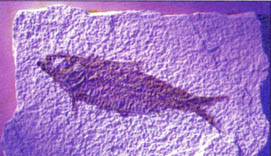NATIONAL ACADEMY PRESS
2101 Constitution Avenue, NW Washington, DC 20418
The National Academy of Sciences is a private, nonprofit, self-perpetuating society of distinguished scholars engaged in scientific and engineering research, dedicated to the furtherance of science and technology and to their use for the general welfare. Upon the authority of the charter granted to it by the Congress in 1863, the Academy has a mandate that requires it to advise the federal government on scientific and technical matters.
Library of Congress Cataloging-in-Publication Data
Teaching about evolution and the nature of science/[Working Group on
Teaching Evolution, National Academy of Sciences].
p. cm.
Includes bibliographical references and index.
ISBN 0-309-06364-7 (pbk.)
1. Evolution (Biology)—Study and teaching. 2. Science—Study and teaching. I. National Academy of Sciences (U.S.). Working Group on Teaching Evolution.
QH362.T435 1998
576.8'071—dc21 98-16100
CIP
Printed in the United States of America
Copyright 1998 by the National Academy of Sciences. All rights reserved.
Teaching About Evolution and the Nature of Science is available for sale from the
National Academy Press,
2101 Constitution Avenue, NW, Box 285, Washington, DC 20055.
Call 1-800-624-6242 or 202-334-3313 (in the Washington Metropolitan Area).
The report is also available online at www.nap.edu/readingroom/books/evolution98
WORKING GROUP ON TEACHING EVOLUTION
Donald Kennedy (Chairman) Bing Professor of Environmental Studies
Stanford University Stanford, California
Bruce Alberts President
National Academy of Sciences Washington, DC
Danine Ezell
Science Department Bell Junior High School San Diego, California
Tim Goldsmith
Department of Biology Yale University New Haven, Connecticut
Robert Hazen Staff Scientist,
Geophysical Laboratory Carnegie Institution of Washington Washington, DC
Norman Lederman Professor,
College of Science Science and Mathematics Education Oregon State University Corvallis, Oregon
Joseph McInerney Director
Biological Sciences Curriculum Study Colorado Springs, Colorado
John Moore Professor Emeritus of Biology
University of California Riverside, California
Eugenie Scott Executive Director
National Center for Science Education El Cerrito, California
Maxine Singer President
Carnegie Institution of Washington Washington, DC
Mike Smith Associate Professor of Medical Education
Mercer University School of Medicine Macon, Georgia
Marilyn Suiter Director,
Education and Human Resources American Geological Institute Alexandria, Virginia
Rachel Wood Science Specialist
Delaware State Department of Public Instruction Dover, Delaware
STAFF OF THE CENTER FOR SCIENCE, MATHEMATICS, AND ENGINEERING EDUCATION:
Rodger Bybee, Executive Director
Peggy Gill, Research Assistant
Jay Hackett, Visiting Fellow
Patrice Legro, Division Director
Steve Olson, Consultant Writer
Acknowledgments
The National Academy of Sciences gratefully acknowledges contributions from:
Howard Hughes Medical Institute
The Esther A. and Joseph Klingenstein Fund, Inc.
The Council of the National Academy of Sciences
The 1997 Annual Fund of the National Academy of Sciences, whose donors include
NAS members and other science-interested individuals.
We also extend special thanks to members of the Council of State Science Supervisors and teachers who participated in focus groups and provided guidance on the development of this document.

Contents
Preface
In a 1786 letter to a friend, Thomas Jefferson called for "the diffusion of knowledge among the people. No other sure foundation can be devised for the preservation of freedom and happiness."1 Jefferson saw clearly what has become increasingly evident since then: the fortunes of a nation rest on the ability of its citizens to understand and use information about the world around them.
We are about to enter a century in which the United States will be even more dependent on science and technology than it has been in the past. Such a future demands a citizenry able to use many of the same skills that scientists use in their work—close observation, careful reasoning, and creative thinking based on what is known about the world.
The ability to use scientific knowledge and ways of thinking depends to a considerable extent on the education that people receive from kindergarten through high school. Yet the teaching of science in the nation's public schools often is marred by a serious omission. Many students receive little or no exposure to the most important concept in modern biology, a concept essential to understanding key aspects of living things—biological evolution. People and groups opposed to the teaching of evolution in the public schools have pressed teachers and administrators to present ideas that conflict with evolution or to teach evolution as a "theory, not a fact." They have persuaded some textbook publishers to downplay or eliminate treatments of evolution and have championed legislation and policies at the state and local levels meant to discourage the teaching of evolution.
These pressures have contributed to widespread misconceptions about the state of biological understanding and about what is and is not science. Fewer than one-half of American adults believe that humans evolved from earlier species.2 More than one half of Americans say that they would like to have creationism taught in public school classrooms3 —even though the Supreme Court has ruled that "creation science" is a religious idea and that its teaching cannot be mandated in the public schools.4
The widespread misunderstandings about evolution and the conviction that creationism should be taught in science classes are of great concern to the National Academy of Sciences, a private nonpartisan group of 1,800 scientists dedicated to the use of science and technology for the general welfare. The Academy and its affiliated institutions—the National Academy of Engineering, the Institute of Medicine, and the National Research Council—have all sought to counter misinformation about evolution because of the enormous body of data supporting evolution and because of the importance of evolution as a central concept in understanding our planet.
The document that you are about to read is addressed to several groups at the center of the ongoing debate over evolution: the teachers, other educators, and policy makers who design, deliver, and oversee classroom instruction in biology. It summarizes the overwhelming observational evidence for evolution and suggests effective ways of teaching the subject. It explains the nature of science and describes how science differs from other human endeavors. It provides answers to frequently asked questions about evolution and the nature of science and offers guidance on how to analyze and select teaching materials.
This publication does not attempt specifically to refute the ideas proffered by those who oppose the teaching of evolution in public schools. A related document, Science and Creationism: A View from the National Academy of Sciences, discusses evolution and "creation science" in detail.5 This publication instead provides information and resources that teachers and administrators can use to inform themselves, their students, parents, and others about evolution and the role of science in human affairs.
One source of resistance to the teaching of evolution is the belief that evolution conflicts with religious principles. But accepting evolution as an accurate description of the history of life on earth does not mean rejecting religion. On the contrary, most religious communities do not hold that the concept of evolution is at odds with their descriptions of creation and human origins.
Nevertheless, religious faith and scientific knowledge, which are both useful and important,
are different. This publication is designed to help ensure that students receive an education in the sciences that reflects this distinction.
The book is divided into seven chapters and five appendices, plus three interspersed "dialogues" in which several fictional teachers discuss the implications of the ideas discussed in the book.
-
Chapter 1, "Why Teach Evolution," introduces the basic concepts of evolutionary theory and provides scientific definitions of several common terms, such as "theory" and "fact," used throughout the book.
-
The first dialogue, "The Challenge to Teachers," follows the conversation of three teachers as they discuss some of the problems that can arise in teaching evolution and the nature of science.
-
Chapter 2, "Major Themes in Evolution," provides a general overview of evolutionary processes, describes the evidence supporting evolution, and shows how evolutionary theory is related to other areas of biology.
-
The second dialogue, "Teaching About the Nature of Science," follows the three teachers as they engage in a teaching exercise designed to demonstrate several prominent features of science.
-
Chapter 3, "Evolution and the Nature of Science," uses several scientific theories, including evolution, to highlight important characteristics of scientific endeavors.
-
The third dialogue, "Teaching Evolution Through Inquiry," presents a teacher using an exercise designed to interest and educate her students in fossils and the mechanisms of evolution.
-
Chapter 4, "Evolution and the National Science Education Standards ," begins by describing the recent efforts to specify what students should know and be able to do as a result of their education in the sciences. It then reproduces sections from the 1996 National Science Education Standards released by the National Research Council that relate to biological evolution and the nature and history of science.
-
Chapter 5, "Frequently Asked Questions About Evolution and the Nature of Science," gives short answers to some of the questions asked most frequently by students, parents, educators, and others.
-
Chapter 6, "Activities for Teaching About Evolution and the Nature of Science," provides eight sample activities that teachers can use to develop students' understanding of evolution and scientific inquiry.
-
Chapter 7, "Selecting Instructional Materials," lays out criteria that can be used to evaluate school science programs and the content and design of instructional materials.
-
The appendices summarize significant court decisions regarding evolution and creationism issues, reproduce statements from a number of organizations regarding the teaching of evolution, provide references for further reading and other resources, and conclude with a list of reviewers.
Teaching About Evolution and the Nature of Science was produced by the Working Group on Teaching Evolution under the Council of the National Academy of Sciences. The Working Group consists of 13 scientists and educators who have been extensively involved in research and education on evolution and related scientific subjects. The group worked closely with teachers, school administrators, state officials, and others in preparing this publication, soliciting suggestions for what would be most useful, and responding to comments on draft materials. We welcome additional input and guidance from readers that we can incorporate into future versions of this publication. Please visit our World Wide Web site at www4.nas.edu/opus/evolve.nsf for additional information.
NOTES
|
1. |
Thomas Jefferson, To George Wythe, "Crusade Against Ignorance" in Thomas Jefferson on Education, ed. Gordon C. Lee. 1961. New York: Teachers College Press, pp. 99-100. |
|
2. |
National Science Board. 1996. Science and Engineering Indicators —1996. Washington, DC: U.S. Government Printing Office. |
|
3. |
Gallup Poll, News Release, May 24, 1996. |
|
4. |
In the 1987 case Edwards v. Aguillard, the U.S. Supreme Court reaffirmed the 1982 decision of a federal district court that the teaching of "creation science" in public schools violates the First Amendment of the U.S. Constitution. |
|
5. |
National Academy of Sciences. (in press). Science and Creationism: A View from the National Academy of Sciences. Washington, DC: National Academy Press. (See www.nap.edu) |













